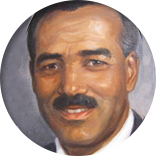Where Did the Term “Redlining” Originate?
The Answer is…The Home Owners Loan Corporation
The Home Owners Loan Corporation (HOLC) was established in 1933, in the wake of the Great Depression, with the mission of stabilizing the housing market and protecting homeownership. At that time, the country was experiencing unprecedented rates of foreclosure. Between 1933 and 1935, the HOLC refinanced more that 1 million mortgages on owner-occupied, non-farm residences in the country to the tune of $3 billion.
One of the great contributions of the HOLC was the creation of the low down payment, long-term, fixed-rate, fully-amortizing mortgage. Although the 30-year, fixed-rate loan is the most common type of mortgage in the U. S. housing market today, before the HOLC mortgage had very short terms (five to ten years and were non-amortizing, so that at the end of the five-to ten-year period, borrowers needed to take out a new loan to pay off the remaining principle balance. The HOLC’s innovative mortgage product eliminated much of the volatility of the mortgage market and mortgages, and therefore [made] homeownership less risky for borrowers.
Because it played such a significant role in the mortgage market, the HOLC was very concerned about understanding and assessing the factors that might contribute to mortgage risk, including the risk that properties would decline in value. Such declines would mean that if the borrower defaulted, the home could not be sold at a high enough price to pay off the remaining loan balance. Therefore, the HOLC undertook a survey to assess risk in all cities across the country; virtually all cities with populations of 40,000 persons or greater.
Through this undertaking the HOLC standardized and formalized the appraisal process. Its methodology was not new; rather, it codified the typical private sector practices of the time, which reflected a view of neighborhood dynamics and their impact on property values that was blatantly discriminatory against Black people, immigrants from certain countries, and some religious groups. That view held that the presence of these people contributed to neighborhood deterioration and the decline in property values, and that clear lines of racial and social demarcation were necessary to protect property values in the most desirable areas.
The HOLC appraisal methodology divided neighborhoods into four categories: Best, Still Desirable, Declining, and Hazardous, or A, B, C and D. On the so-called Residential Security maps on which its survey results were recorded, these were color-coded green, blue, yellow and red, respectively. Neighborhoods could be coded red, or “hazardous,

